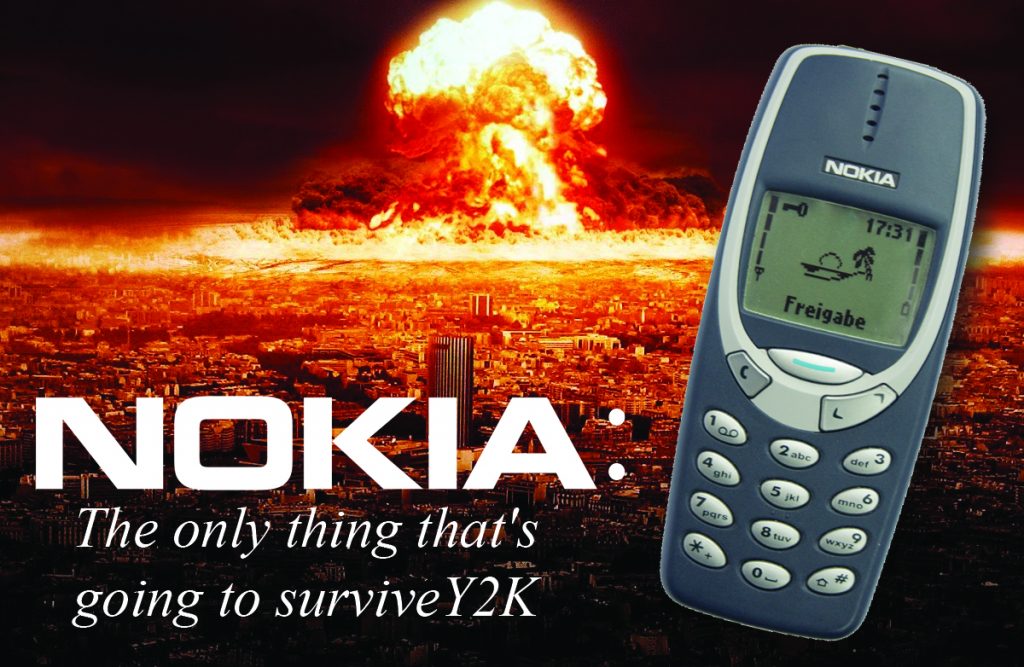
March 1998
Cell phones–they have only recently become popular with the general public, despite still looking like bricks. A few years ago, the mere concept of having a phone you could carry around anywhere with you would have been absurd. Recently, however, this incredible concept has experienced a rather turbulent start.
It all started on a fair September afternoon, when United Airlines flight 144 was taking off from New York, bound for London. One passenger, having put their Nokia in the seatback pocket in front of them, decided to check their recently-acquired gadget for perhaps the hundredth time that day. Unfortunately, their grip slipped, causing the phone to drop to the floor… and go right through it. The phone was later found intact in a farmer’s field roughly 120 km north of New York. The investigation concluded the device was so durable (and heavy), it fell through the aircraft’s floor and the exterior hull. Through the heroic actions of the crew, the aircraft managed to safely perform an emergency landing in its airport of origin.
Nonetheless, this incident has forced airlines all over the world to warn passengers about bringing in robust phones on board their aircraft.
“It’s simply too dangerous”, Bill Adams, an Air Canada executive stated. “If nothing is done about these devices, we fear flight 144 may not just be the one isolated incident. If multiple passengers bring these phones on board and simultaneously drop them during the flight, the damage to the aircraft could be catastrophic. At a higher altitude, explosive decompression could rip the aircraft apart. We want to minimize that risk.”
Nokia has declined to provide any specific commentary on the subject, stating only that their phones are built to “the highest of structural standards.” At this rate, one could even say they’re bulletproof.
Passengers, however, have also rallied to protest against these restrictions, saying they can hold their phones as well as they can hold their drinks (which, to be fair, is not always a good thing). Nonetheless, an uproar was caused, with angry customers wondering why their Nokia phones specifically were the target of the ban instead of other similar devices.
“Look, every phone nowadays looks like a brick and is heavy as hell. Take a Motorola for example, I don’t see them banning those on planes. How are Motorola phones different from my trusty Nokia? They should ban those too at this point!” one passenger complained at the check in counter at Pearson International Airport.
Other passengers argued in a similar fashion.
“I was told that my phone was dangerous to the safety of the other passengers. Come on, it’s not like it’s going to explode or burst into flames or anything, right? Now that would be a real cause for concern, and I can say for a fact that won’t be happening with the excellent phone quality we have nowadays!” another passenger told reporters as his phone was confiscated at the security check.
Airport and airline officials have fired back, with the director of the Greater Toronto Airports Authority simply stating, “You would probably be questioned by security if you were carrying a brick in your luggage or carry-on, not to mention getting it confiscated. Nokias are no different. Think on the bright side–at least you’re not getting arrested or denied boarding.”
While this fiasco is likely the product of skepticism around the new devices, with aviation analysts claiming it will eventually die down, it does get one thinking about the future of cellphones and how well they’ll be accepted by the general public. After all, a phone that spontaneously explodes while being charged, for example, would seem a lot more hazardous to aviation safety, but even that notion is simply absurd. It’s not like companies would make a phone that dangerous, right?



